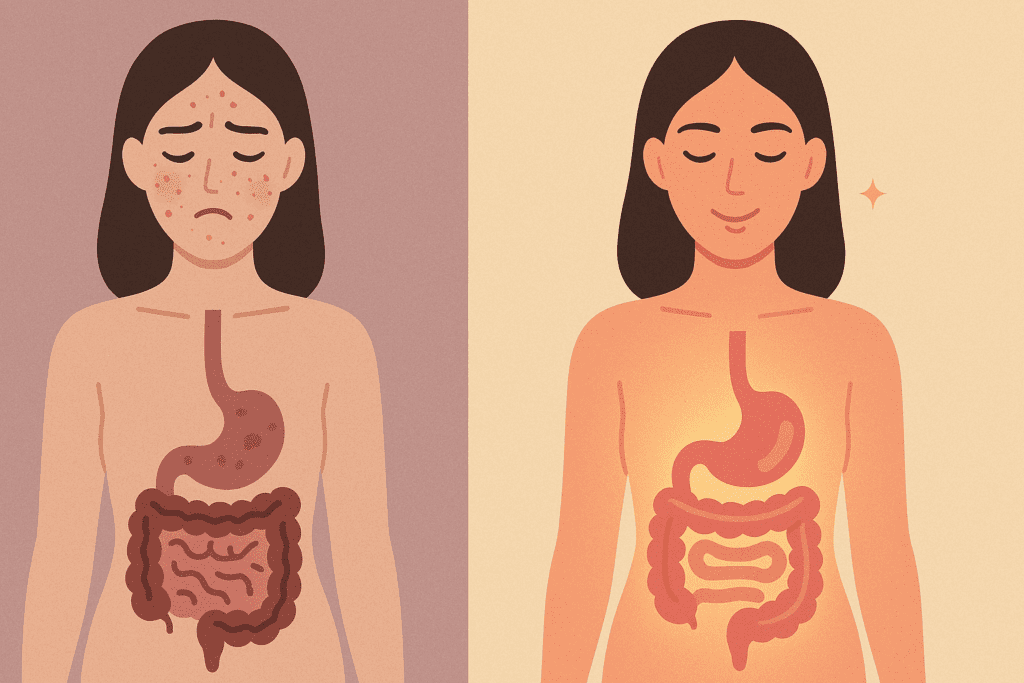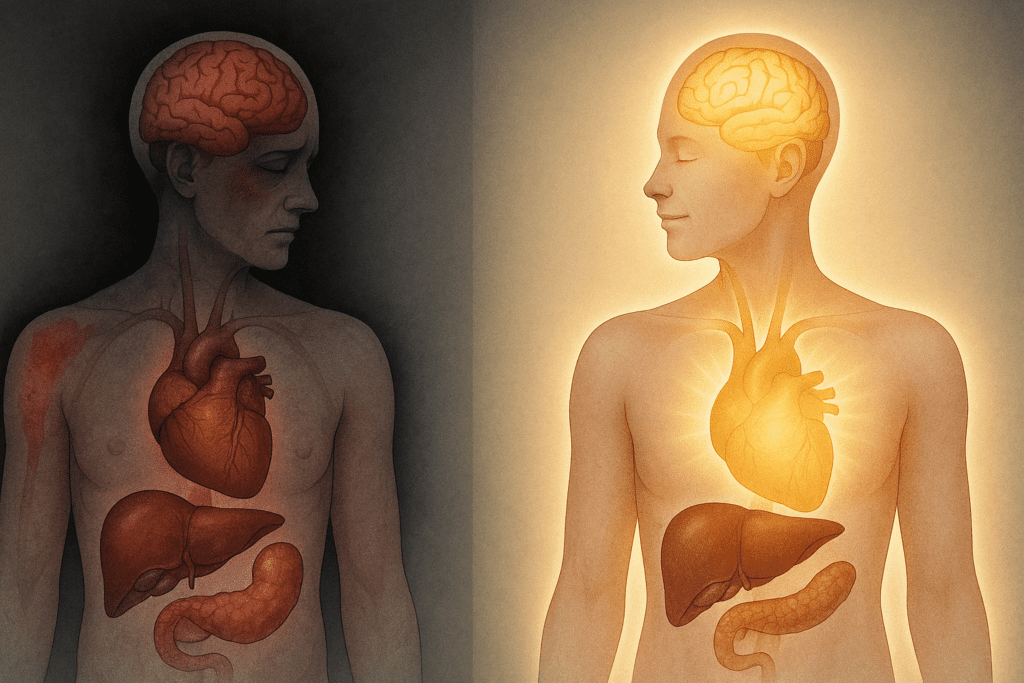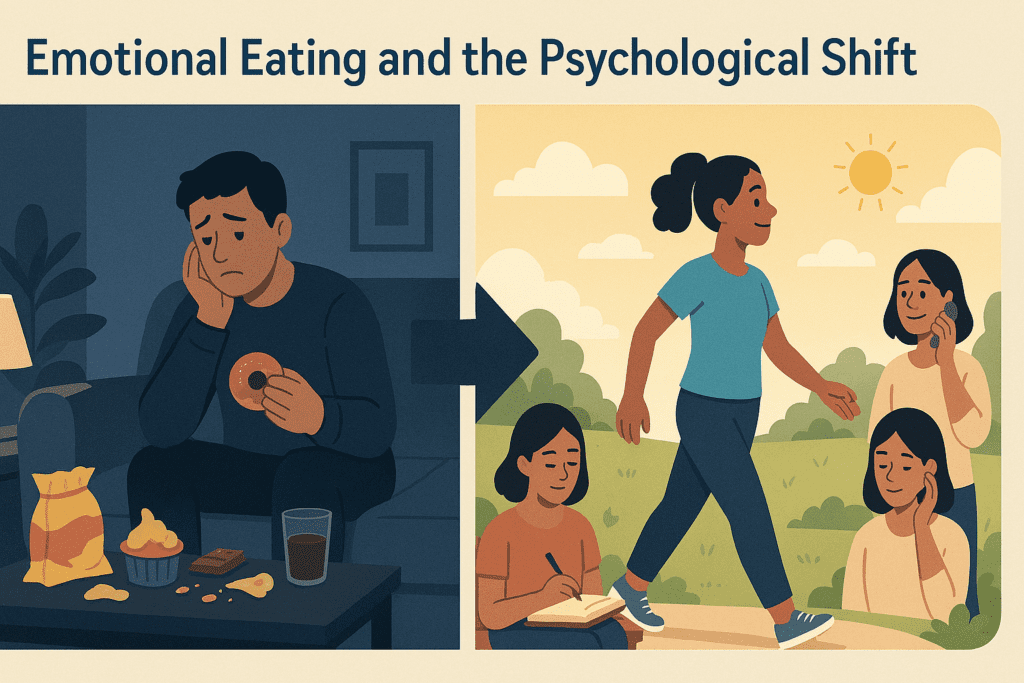For many people, sugar is more than just a sweet indulgence—it’s a deeply ingrained part of daily life. From morning coffees and snacks to sauces and packaged meals, sugar hides in plain sight and often in places we least expect. But as scientific research continues to illuminate the negative effects of excessive sugar intake, more individuals are turning to structured approaches like the 30 day no sugar challenge as a way to take control of their health. The idea of removing added sugar for a full month has become a popular way to reset the body, recalibrate cravings, and develop a healthier relationship with food. While it may sound daunting at first, the potential benefits—ranging from clearer skin and improved energy to better digestion and mental clarity—are both real and well-documented.
This article explores what actually happens when you give up sugar for 30 days. We’ll look at the physiological changes, the emotional hurdles, and the science behind the transformation. Whether you’re seeking motivation for your own sugar detox or simply curious about what the no sugar for a month before and after journey looks like, you’ll find expert insight here. Most importantly, this guide draws from evidence-based research and real-world experience to help you understand why the 30 day plan to get off sugar isn’t just a temporary fix—it can be the start of a more balanced, sustainable lifestyle.
You may also like: Why Am I Craving Sweets All of a Sudden? Expert-Backed Reasons and How to Stop Sugar Cravings Naturally

Sugar’s Hidden Role in the Modern Diet
Sugar has become so commonplace in processed foods that many people unknowingly consume far more than they realize. Added sugars are often disguised under names like dextrose, malt syrup, corn syrup solids, or evaporated cane juice. These sweeteners contribute empty calories while offering no essential nutrients, and they play a major role in the development of chronic conditions such as type 2 diabetes, obesity, and cardiovascular disease. The average American adult consumes over 60 pounds of added sugar per year, far exceeding the recommended limits.
The 30 day no sugar challenge provides a unique opportunity to reassess this relationship. By cutting added sugars for just one month, individuals are able to observe how deeply sugar influences their energy levels, mood, metabolism, and food choices. It’s not just about avoiding desserts—it’s about becoming more conscious of how many everyday items contain added sweeteners and how our bodies respond when we finally give them a break.

Week One: Withdrawal Symptoms and Cravings Surface
The first few days of the challenge are often the hardest. When you suddenly eliminate sugar, your body may respond with withdrawal symptoms that mimic those associated with other addictive substances. These symptoms can include headaches, fatigue, irritability, low mood, and intense cravings. This is a physiological reaction to the absence of dopamine spikes that sugar typically provides. Sugar stimulates the brain’s reward system, and when it’s removed, the body experiences a noticeable shift.
While uncomfortable, these symptoms are temporary. By day four or five, many people report feeling a slight easing of cravings and fewer mood swings. Hydration, sleep, and nutrient-dense meals help support the body during this phase. Understanding that these early discomforts are part of the process can make a significant difference in staying committed. The beginning of the 30 day plan to get off sugar is a period of detox—both physically and mentally—and it sets the stage for lasting transformation.

Week Two: Energy and Focus Begin to Normalize
By the second week, your body starts to adjust to a life without added sugar. This stage is often marked by more stable blood sugar levels, leading to fewer energy crashes and more consistent focus throughout the day. People commonly report improved sleep quality, clearer thinking, and increased productivity. These benefits are linked to the body’s ability to regulate insulin more efficiently once it’s no longer dealing with the constant spikes and dips caused by added sugars.
Mental health also tends to improve during this stage. Without the sugar-induced highs and crashes, mood swings become less frequent, and many individuals report feeling calmer and more emotionally balanced. This phase of the no sugar for 30 days challenge can be deeply rewarding as the body begins to operate on a more natural rhythm. You may even start to notice a renewed sensitivity to sweet flavors in naturally occurring foods like fruit or roasted vegetables, which can enhance your appreciation of wholesome ingredients.

Week Three: Gut Health and Skin Improvements Appear
The third week is often when changes become visible. Digestive health usually improves significantly as the gut microbiome begins to rebalance. Excess sugar promotes the growth of harmful bacteria and yeast in the digestive tract, which can lead to bloating, irregular bowel movements, and discomfort. Removing sugar allows beneficial bacteria to thrive, leading to a healthier gut and better nutrient absorption.
Skin is another area where positive changes are frequently noticed. People struggling with acne, inflammation, or dullness often find their complexion becomes clearer and more radiant. This is not surprising, given that high sugar intake has been shown to increase sebum production and inflammation—two major contributors to skin problems. By week three, many people see the tangible benefits of their efforts, reinforcing the motivation to complete the challenge. The 30 days no sugar before and after transformation often becomes visible on the outside as a reflection of internal healing.

Week Four: Taste Bud Reset and Long-Term Awareness
By week four, most participants in the 30 day no sugar challenge find that their taste buds have undergone a remarkable transformation. Foods that once seemed bland or boring begin to taste sweeter and more flavorful. This reset occurs because constant exposure to added sugars dulls taste receptors over time. Once sugar is removed, these receptors regain their sensitivity, allowing you to enjoy the natural sweetness of whole foods in a more profound way.
This stage is also where sustainable behavior change takes root. Many people report that they no longer crave ultra-processed snacks and feel more in control of their eating habits. There’s a new sense of confidence in making healthier choices, understanding how sugar previously influenced mood and hunger. Even if some sugar is reintroduced after the challenge ends, it often happens in moderation and with greater awareness. This is the true value of the no sugar for a month before and after experience—it equips you with tools for long-term health, not just short-term results.

The Science Behind Quitting Sugar
Scientific studies support the benefits of cutting sugar. A study published in the journal Obesity showed that reducing sugar intake for just 10 days, even without reducing total calories, led to improvements in blood pressure, cholesterol, and insulin sensitivity. Other research links high sugar consumption to increased risks of depression, cognitive decline, and fatty liver disease. These findings make it clear that the impact of sugar is far-reaching, affecting not just weight but also brain function, hormonal balance, and immune health.
What’s compelling about the 30 day plan to get off sugar is that it doesn’t rely on gimmicks or extreme dieting. It’s a simple, focused intervention that removes a major dietary culprit and allows the body to reset. Because the benefits are backed by science and observed consistently in real-world practice, the challenge has earned credibility as a legitimate strategy for improving overall health. Whether used as a detox or a stepping stone to lasting change, quitting sugar for a month offers measurable, evidence-based rewards.

Emotional Eating and the Psychological Shift
Beyond the physical improvements, one of the most significant shifts during a 30 day no sugar challenge is emotional. Sugar is often used as a coping mechanism—whether to celebrate, console, or alleviate boredom. When sugar is removed, you’re left to confront these triggers without your usual fallback. This can be uncomfortable at first, but it also presents an opportunity for growth.
Many people learn to replace emotional eating with healthier habits such as journaling, movement, or talking with a friend. As awareness increases, it becomes easier to recognize emotional hunger versus physical hunger. Over time, this leads to a more mindful approach to food and a greater sense of empowerment. By the end of the challenge, individuals not only feel healthier but also more in control of their choices. This emotional transformation is a key aspect of the no sugar before and after journey—one that leaves a lasting imprint on both mind and body.
Frequently Asked Questions: The 30 Day No Sugar Challenge and Its Full Impact
1. What are the most overlooked benefits people discover after completing the 30 day no sugar challenge?
Many people start the challenge expecting physical changes like weight loss or clearer skin, but often it’s the mental and emotional benefits that are most surprising. Participants frequently report an unexpected sense of freedom around food, no longer feeling controlled by cravings or compulsive snacking. Improved sleep quality is another less obvious perk—by week three, many experience deeper, more restful sleep, likely due to better blood sugar balance and lower cortisol levels. Social confidence also tends to rise; people feel more in control during events or meals out, no longer swayed by sugar-laden temptations. These unexpected effects often shape the broader no sugar before and after lifestyle shift, helping people make more intentional choices even after the challenge ends.
2. Can quitting sugar for 30 days improve your relationship with food long term?
Absolutely. The 30 day no sugar challenge isn’t just a dietary experiment—it’s a crash course in mindful eating. It encourages you to pay attention to why you eat, not just what you eat. Many participants realize how often they turned to sugar out of stress, boredom, or habit, rather than true hunger. This increased awareness can lead to a healthier relationship with food overall. The no sugar for 30 days journey becomes a powerful tool for unlearning emotional eating patterns and replacing them with healthier coping mechanisms like movement, creativity, or social interaction.
3. How does the 30 day plan to get off sugar affect your social life?
Social settings can be one of the most challenging parts of the 30 day plan to get off sugar, especially when gatherings revolve around food and drinks. However, many people find that the experience deepens their social interactions by encouraging conversations around wellness and self-discipline. It also teaches you how to assert your boundaries without guilt—like bringing your own snacks to a party or politely declining dessert. Over time, your social circle may even begin to support and admire your efforts. The broader 30 days no sugar before and after impact often includes a reevaluation of the environments and relationships that support or hinder your health goals.
4. What’s the best way to prepare for the no sugar for 30 days challenge?
Preparation is key to success. One of the most effective strategies is a pantry audit—clearing out hidden sugars from your cabinets and fridge before the challenge begins. This includes checking labels for sneaky sweeteners in condiments, cereals, and so-called “healthy” snacks. Stocking up on naturally sweet alternatives like fresh berries or cinnamon-spiced oatmeal can help you transition more smoothly. Setting clear intentions—whether written or shared with a friend—can reinforce your commitment. People who plan ahead often report stronger results and fewer setbacks in their no sugar for a month before and after journey.
5. Are there any potential downsides to cutting sugar completely for a month?
While most effects are positive, some people may experience temporary side effects such as moodiness, low energy, or digestive changes during the early detox period. For individuals with certain health conditions like hypoglycemia or those on specific medications, sudden sugar elimination should be monitored by a healthcare provider. It’s also important to ensure that in removing sugar, you’re not unintentionally under-eating or replacing it with artificial sweeteners that may cause other issues. When done mindfully, the 30 day no sugar challenge is safe for most people, but balance and medical context matter, especially when navigating individualized nutrition needs.
6. How does the no sugar for a month before and after transformation affect your palate?
One of the most fascinating changes during this challenge is how your taste buds adapt. Many people report that by the third week, even mildly sweet foods—like raw almonds or steamed carrots—begin to taste surprisingly rich. This recalibration of taste allows for a deeper appreciation of natural flavors, making it easier to maintain lower sugar consumption after the challenge. Reintroducing sugary treats after the 30 days often feels overwhelming, with foods tasting too sweet or artificial. This shift is a cornerstone of the no sugar for a month before and after experience and contributes significantly to long-term change.
7. Can the 30 day no sugar challenge help with chronic inflammation?
Emerging research suggests that excessive sugar intake is a contributor to systemic inflammation, particularly through its effect on insulin resistance and gut health. Reducing added sugar—even temporarily—may alleviate symptoms related to chronic inflammation such as joint pain, bloating, and even brain fog. While the 30 day plan to get off sugar isn’t a cure for inflammation-related conditions, many participants report feeling less achy, more mobile, and mentally clearer after the first few weeks. These anti-inflammatory benefits often become a compelling reason for people to stick with reduced sugar intake beyond the original challenge.
8. How can parents or families do the 30 day no sugar challenge together?
When done as a family, the challenge becomes a shared educational journey rather than a solo struggle. Involving kids in reading food labels or experimenting with homemade no-sugar recipes can turn the process into a fun learning experience. Families often bond over trying new meals together and celebrating weekly wins. The 30 days no sugar before and after changes are also easier to sustain when the household is aligned in its goals. Modeling healthy eating as a team can establish lifelong habits for children and create a more supportive home environment for everyone involved.
9. What are some unexpected psychological shifts people report after quitting sugar?
Many participants discover a surprising emotional clarity once sugar is out of the picture. Without the rollercoaster of blood sugar crashes and dopamine highs, people often feel more grounded, less reactive, and better equipped to handle stress. Some report heightened self-awareness, including the realization of how deeply tied sugar was to reward systems or coping behaviors. Others experience a renewed sense of autonomy, recognizing that they are no longer beholden to cravings. This internal strength forms part of the deeper no sugar before and after transformation that extends far beyond physical appearance.
10. What happens after the challenge ends—how do you avoid a relapse?
Finishing the 30 day no sugar challenge is just the beginning. The post-challenge phase is crucial for maintaining the progress made. One helpful approach is to slowly reintroduce naturally sweet foods like fruit and small portions of minimally processed treats, while continuing to avoid ultra-processed snacks and sugary drinks. Journaling how you feel after eating certain foods can also help you recognize patterns and triggers. Many people adopt an 80/20 rule—eating low sugar 80% of the time while allowing occasional indulgences without guilt. The true strength of the no sugar for 30 days challenge lies in the insight and self-discipline it builds, enabling long-term change through conscious, balanced choices.
Conclusion: The No Sugar for 30 Days Journey—More Than Just a Diet, It’s a Reset for Life
Giving up sugar for 30 days may seem like a radical move, but for many, it becomes a turning point. The 30 days no sugar before and after transformation is not just physical—though clearer skin, better digestion, and improved energy are undeniable—it’s also deeply mental and emotional. The challenge offers a chance to break free from unhealthy habits, recalibrate your body’s internal systems, and rediscover the joy of eating foods that nourish rather than numb.
Backed by science and supported by countless success stories, the 30 day plan to get off sugar is a simple yet powerful tool for anyone looking to reset their health. From reducing inflammation and stabilizing mood to enhancing focus and supporting long-term wellness, the benefits are far-reaching. More importantly, the challenge cultivates awareness—awareness of how sugar affects your body, your cravings, and your mind.
Whether you maintain a sugar-free lifestyle or simply gain a new perspective on moderation, completing the 30 day no sugar challenge provides lasting value. It teaches discipline, boosts self-trust, and empowers you to take charge of your own well-being. The journey might begin with curiosity or even skepticism, but it often ends with a sense of freedom—a freedom from cravings, from emotional dependence, and from the cycle of sugar-fueled fatigue.
In the end, quitting sugar for a month isn’t about perfection. It’s about progress. It’s about giving your body a chance to heal, your mind a chance to clear, and your habits a chance to shift. And that is a transformation worth making.
Was this article helpful? Don’t let it stop with you. Share it right now with someone who needs to see it—whether it’s a friend, a colleague, or your whole network. And if staying ahead on this topic matters to you, subscribe to this publication for the most up-to-date information. You’ll get the latest insights delivered straight to you—no searching, no missing out.
Further Reading:
What Happens if You Stop Eating Sugar for 30 Days
What Are 30-Day No Sugar Challenges? All You Need To Know
I Gave Up Sugar for 30 Days—Here’s What Happened
Disclaimer
The information contained in this article is provided for general informational purposes only and is not intended to serve as medical, legal, or professional advice. While NewsHealthWatch strives to present accurate, up-to-date, and reliable content, no warranty or guarantee, expressed or implied, is made regarding the completeness, accuracy, or adequacy of the information provided. Readers are strongly advised to seek the guidance of a qualified healthcare provider or other relevant professionals before acting on any information contained in this article. NewsHealthWatch, its authors, editors, and contributors expressly disclaim any liability for any damages, losses, or consequences arising directly or indirectly from the use, interpretation, or reliance on any information presented herein. The views and opinions expressed in this article are those of the author(s) and do not necessarily reflect the official policies or positions of NewsHealthWatch.

